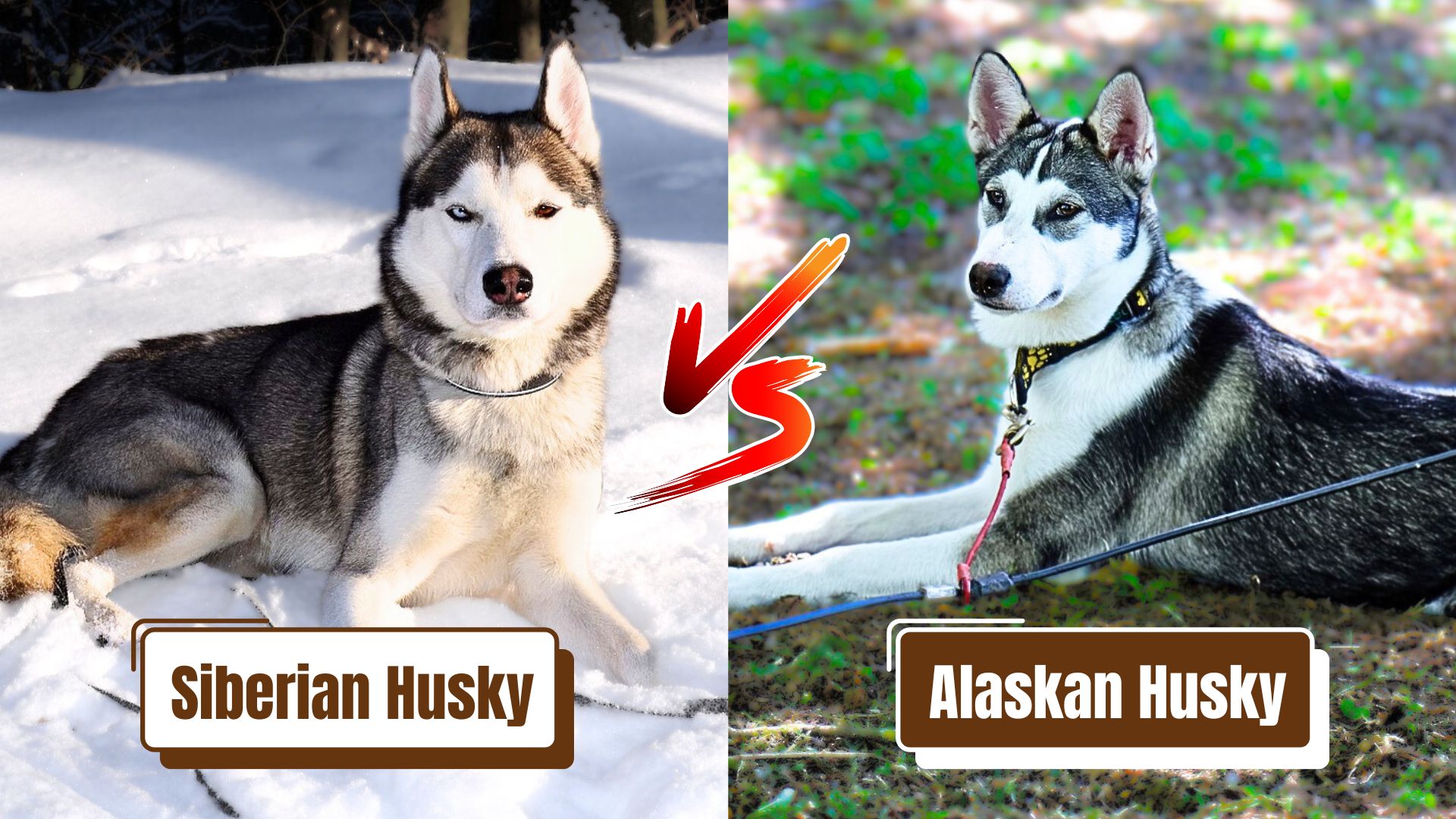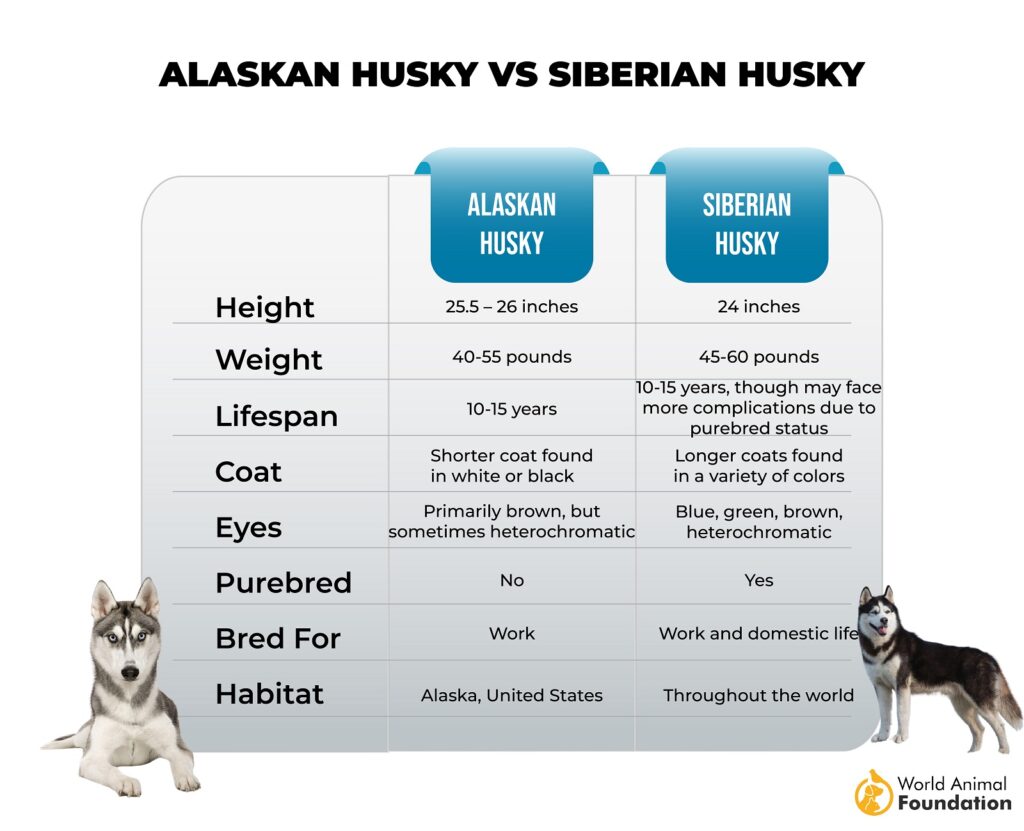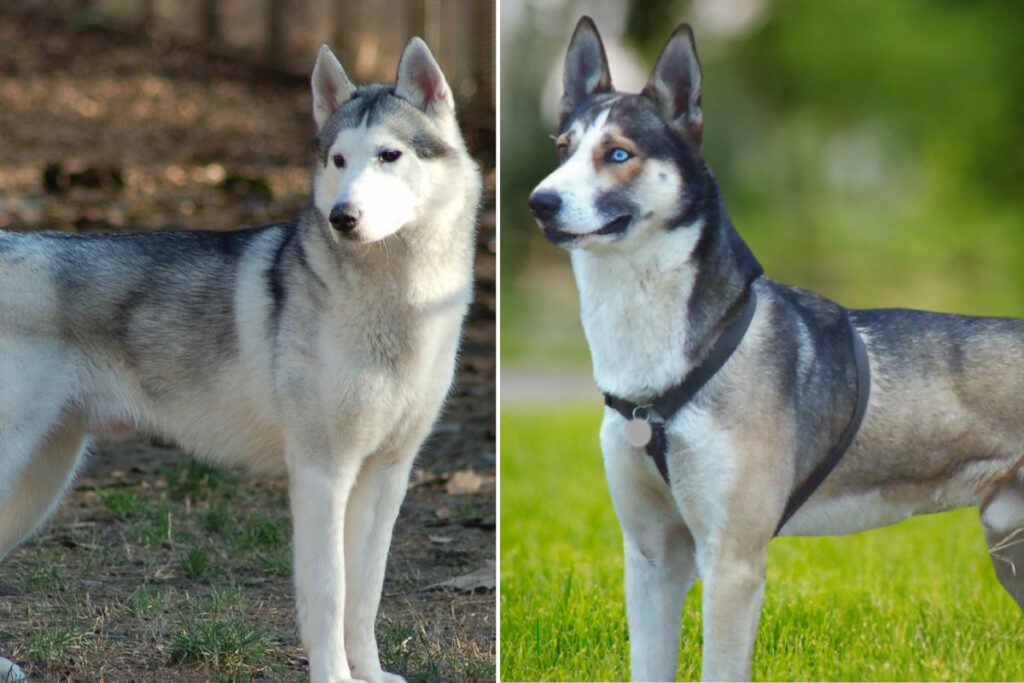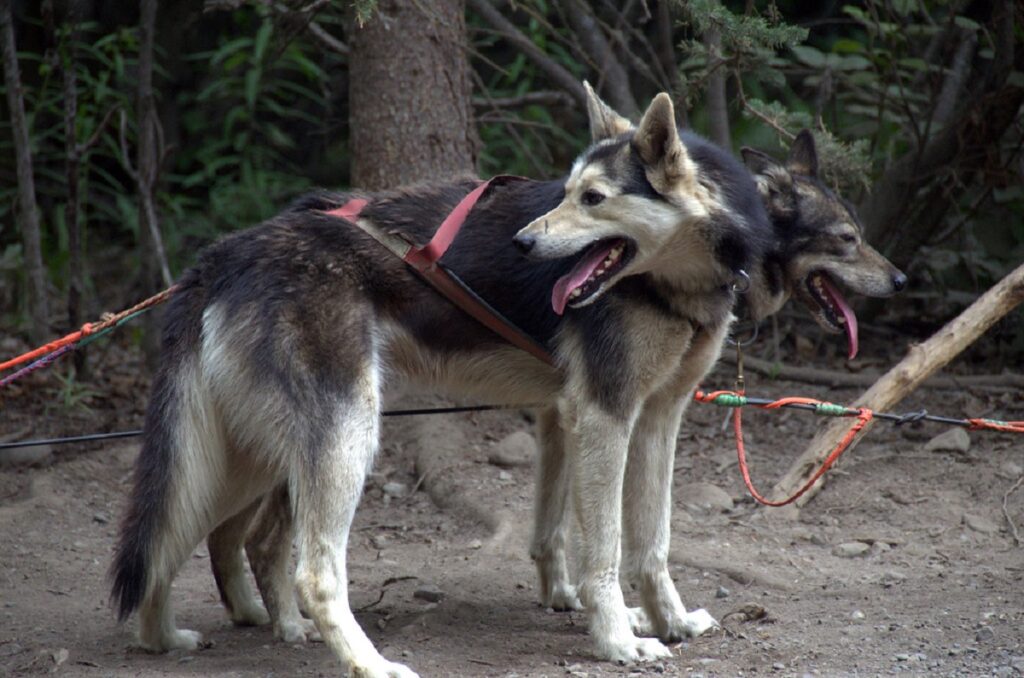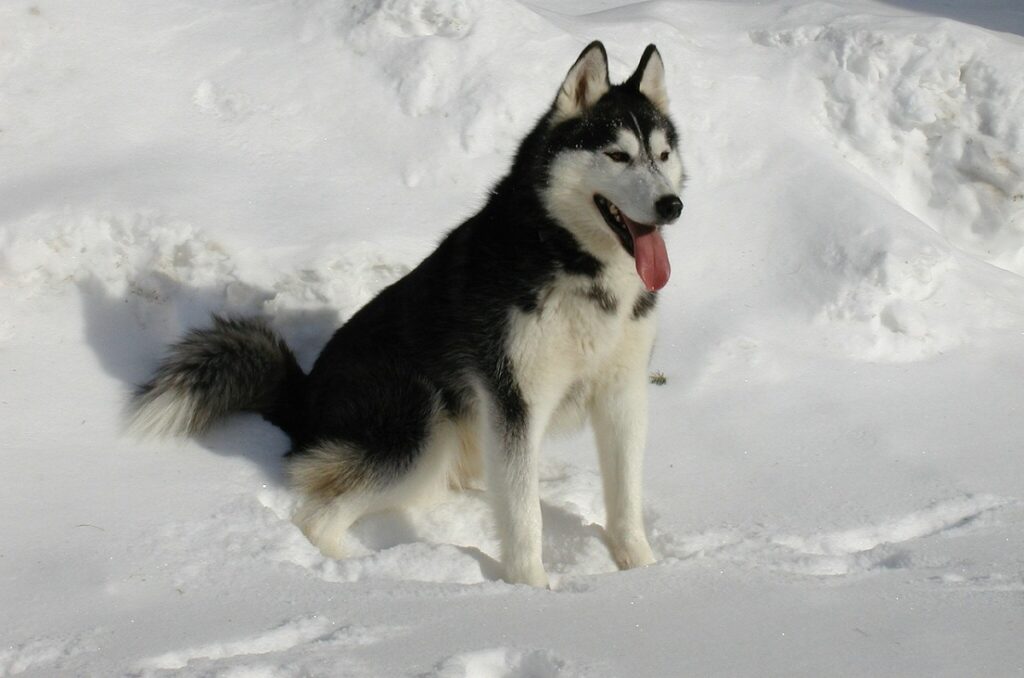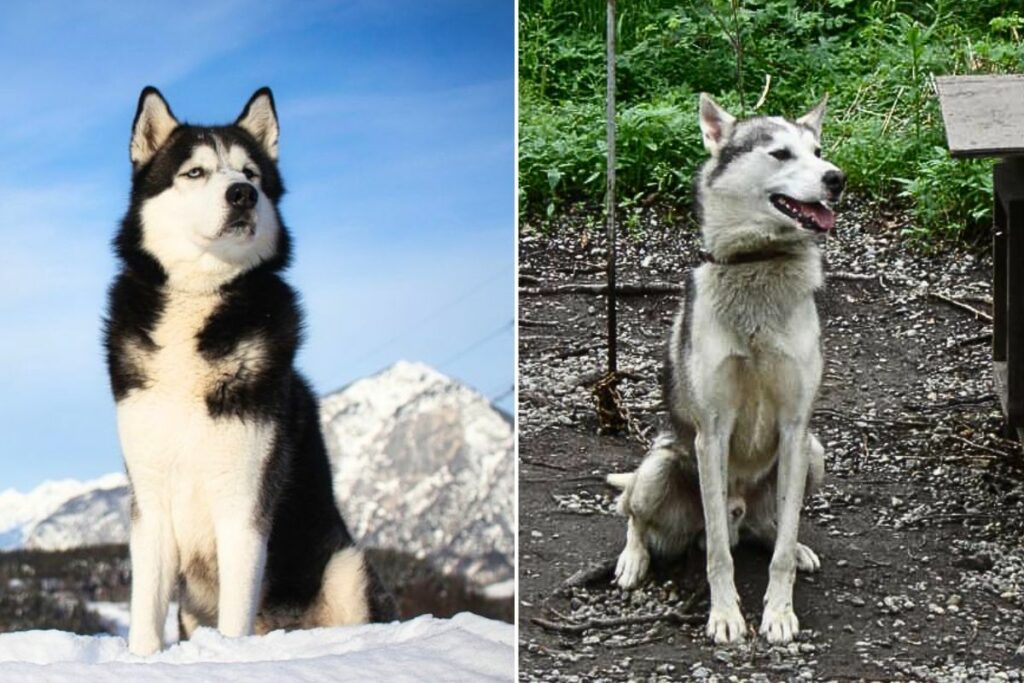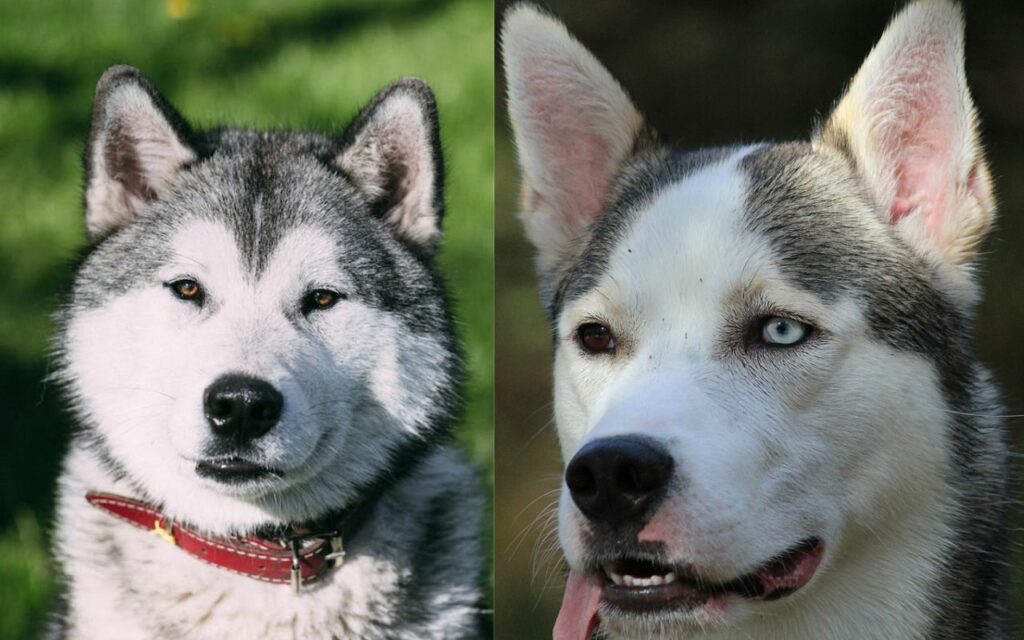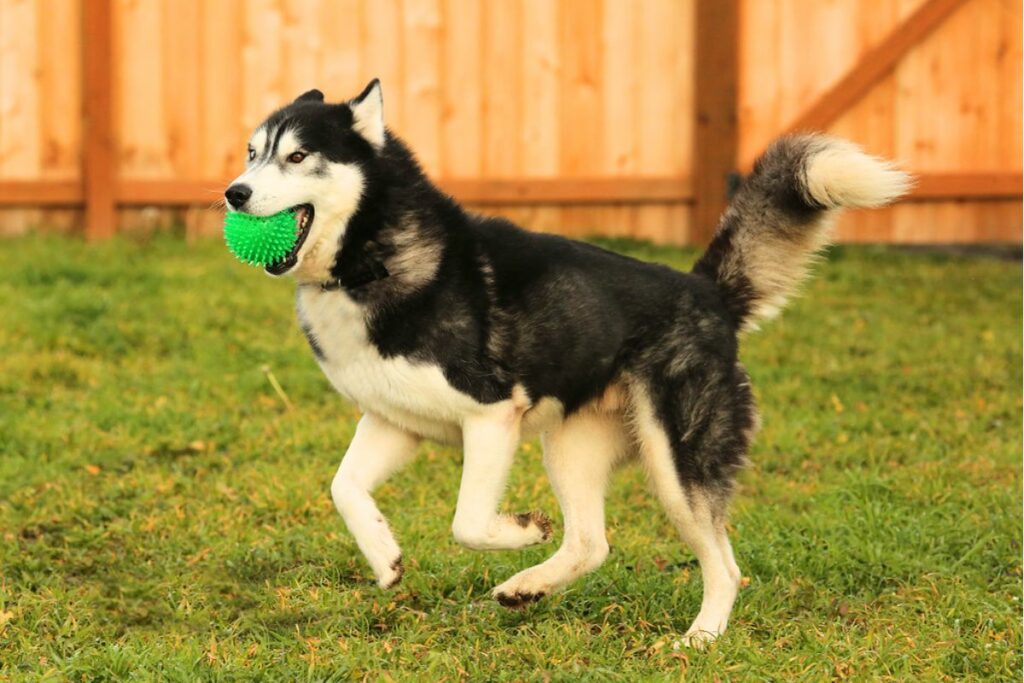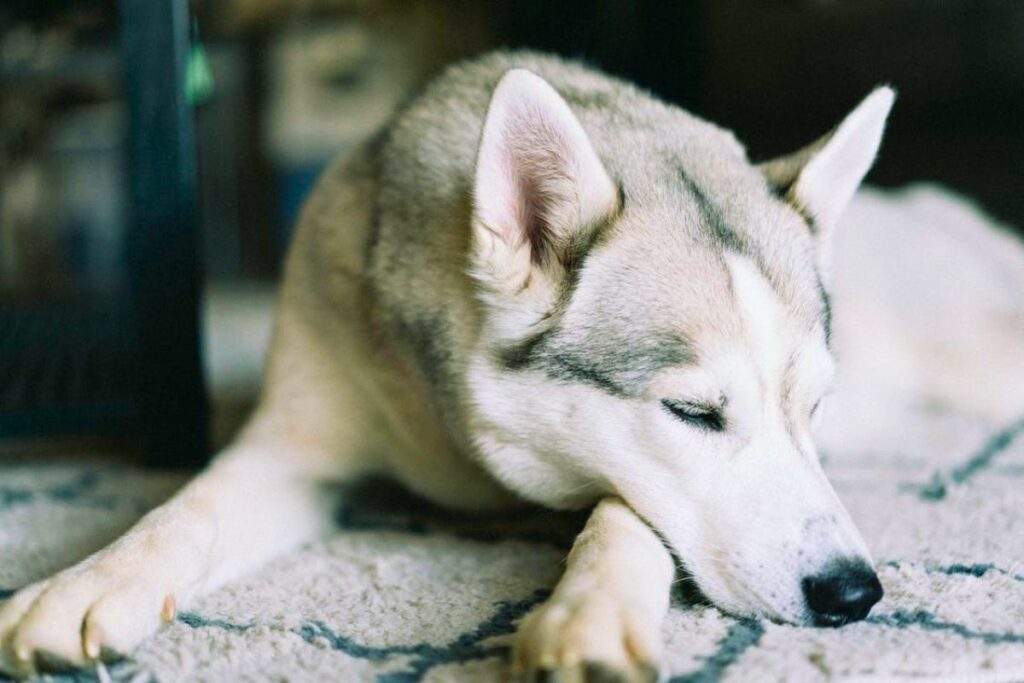Alaskan and Siberian Huskies, both striking and energetic breeds, often get mistaken for one another. While visually similar, key differences separate these sled dogs. From their origins and breeding purposes to their size, energy levels, and even coat patterns, understanding these distinctions is crucial for prospective owners. This guide delves into the unique characteristics of each breed, helping you decipher which husky best suits your lifestyle, whether you’re an experienced musher or simply searching for a loyal companion.
Step into the captivating realm of Alaskan and Siberian Huskies, two breeds renowned for their stunning appearance and remarkable endurance. Originating from the cold, rugged terrains of Alaska and Siberia, these Husky dogs are not just beautiful with their thick fur coats and piercing eyes but also embody strength and resilience.
Alaskan huskies and Siberian huskies have separate origins but were both bred to be sled dogs.
This guide delves into their history, explores their distinct personalities, and helps unravel the subtle yet significant differences between these two iconic breeds, providing a comprehensive understanding for anyone captivated by their allure.
Let’s see how these fluffy and delightful huskies differ.
Alaskan Husky vs Siberian Husky: The Difference
Siberian huskies are bred more for human companionship than Alaskan huskies. They both are working dogs, but Siberian huskies are common pets because they have been raised as pets since their ancestors were with the Chukchi. Alaskan huskies typically are even more obsessed with running than their Siberian husky cousins.
Now, let’s dive into the enchanting similarities and differences between Alaskan and Siberian Husky breeds and find out which of these stunning breeds aligns best with your lifestyle.
Alaskan Husky
The Alaskan husky is not considered a breed by the American Kennel Club (AKC) because they are a mixed breed, not pure, created for a job, and no breed standards are adhered to. Alaskan huskies were created by breeding Siberian huskies with Alaskan Malamutes.
Some say that there could be some Greyhound and German Pointers in the mix. Alaskan huskies are mainly black and white.
Alaskan huskies’ characteristics include intelligence, energy, playfulness, speed, outgoing, stubborn, and loving. They are good-natured and need at least two hours of exercise each day as well as attention and mental stimulation.
Alaskan huskies do well with very active owners who enjoy hiking, walking, a vigorous game of fetch, etc., and have time for those things. This husky is calm after exercising.
Historians believe that the Alaskan husky’s ancestors may have been around 12,000 years ago, but they certainly have been in Alaska for a few centuries. They were chosen by settlers looking for fast and well-insulated canines to pull sleds. They are working dogs that love to run.
Siberian Husky
As a purebred AKC-recognized breed, Siberian huskies are uniform because breeders follow the breed standards. Siberian Huskies are loyal, affectionate, gentle, energetic, playful, good with children and dogs, and need mental stimulus.
Siberian huskies bark, so they are good watchdogs, but they’re too outgoing to be guard dogs. They have great stamina. A Siberian husky can be a show dog.
Siberian huskies are working dogs that love to run and need lots of exercise. Doggy Daycare is good for them, so they can play all day if you’re not home. They have a high prey drive, so early socialization and training are necessary to ensure good behavior and control the prey drive.
Siberian huskies’ ancestors were originally bred in northeastern Asia by the Chukchi people as endurance sled dogs that doubled as companion dogs. The climate changed, and the Chukchi needed to relocate for better hunting opportunities. They packed up their belongings, and their Siberian huskies traveled very far across the Bering Strait to Alaska.
Siberians became famous for winning sled races at the beginning of the 20th century. A dramatic mission involving huskies occurred in 1925 when legendary musher Leonhard Seppala led Siberian Huskies 658 miles in only five and half days to rush a lifesaving serum to Nome, Alaska where people were dying from an epidemic of diphtheria. They still race and are pets as well.
Both Alaskan huskies and Siberian huskies are good with other dogs because they are accustomed to pulling sleds with them.
Alaskan husky vs Siberian husky Physical Characteristics
The Alaskan husky height is 25.5-26 inches tall, and the Sibe height is 24 inches tall. The Alaskan Husky weight is 40-55 pounds, and Sibes weight is 45-60 pounds. The females are shorter than the males, and females have a lower weight than the males. The Alaskan husky’s size is a bit larger.
Appearance-wise, Alaskan huskies are an inch or two taller than Siberian huskies because they have Malamute genes. Alaskan huskies’ weight is five to ten pounds more than Siberian huskies’ weight on average, so their weight is close. Alaskan huskies have shorter fur than the Sibes, and both have a double coat of fur.
Alaskan huskies are mostly in Alaska, and Siberian huskies are found worldwide.
Alaskan huskies typically have brown eyes or heterochromia (two eye colors in one eye). Siberian huskies can have a variety of eye color combinations: brown eyes, green eyes, blue eyes, and heterochromatic (bi colored with blue and brown, blue and green, or brown and green)– that’s another appearance difference. They have very unique eye-coloring.
As far as coat coloring, the Alaskan husky usually has a black and white coat, not multiple colors. The Sibe’s range of colors includes gray, white, red, Agouti, brown, and black.
Sibes have a longer coat. Both dogs’ coats keep them warm in the snow and low temperatures. Their coats are waterproof so their bodies remain dry in snow and rain. Also, when mud dries, it brushes right off their coats.
Alaskan Huskies vs. Siberian Huskies Personalities
Although they are both intelligent and independent, Siberians are a little more social and dependent on human companionship than Alaskan huskies, which are known to like adventures and will make a run for it if given the opportunity.
The Alaskan huskies prefer fun to routine. Let them off the leash, and the last you’ll see of them is their butts as they disappear fleeing the scene. Both huskies need firm guidance in training. Some can be good with other animals.
The Siberian husky breed is a little less obsessed with work and eager to fit playing into their schedules than their Alaskan counterparts, probably because they were domesticated earlier. Also, Sibes slept in the tents with the Chukchi people and shared food with them, so they have actually kcfvbeen domesticated for thousands of years.
Training
Like other dog breeds, the Alaskan husky and Siberian husky respond to positive reinforcement. They like challenges. They are both stubborn, so you have to establish dominance.
Siberian and Alaskan Huskies Domesticated Different Breeds
The Siberian husky was domesticated earlier than the Alaskan husky and brought into the home. They aren’t quite as physically able to do the work of their ancestors.
Alaskan Husky and Siberian Husky Health
Each is a healthy dog. The Alaskan husky might live longer because they aren’t purebred. Sibes can be prone to genetic conditions due to their purebred status. Huskies live 10-15 years.
Who Would Win a Fight: Husky vs Wolf
Wolves are taller, weigh more, run faster, and have a stronger bite force, so a wolf would most likely win a fight with a husky.
Are Huskies Intelligent Dogs?
Huskies have above-average intelligence and are smart dogs. They are independent and stubborn, so their owners sometimes don’t realize they are rejecting commands and are unable to obey them.
Intelligence and obedience are different things. Once you establish that you’re the alpha, you can teach them easily.
FAQs
What Two Dogs Make an Alaskan Husky?
Alaskan huskies share DNA with Alaskan Malamutes and the Siberian huskies. Some other breeds may also be thrown in, like German Pointers and Greyhounds.
What Is the Most Friendly Husky Breed?
Siberian huskies are the friendliest huskies.
Is an Alaskan Husky a Thing?
Alaskan huskies are a type of dog, not a breed of dog. The American Kennel Club (AKC) doesn’t recognize them because they were bred for a job (sled dog), not by using physical standards/characteristics. An Alaskan husky can’t be a show dog.
What Is the Difference Between a Siberian Husky and an Alaskan Malamute?
Key differences are physical and personality differences, but the main difference is their “purpose.” Siberian huskies are smaller and faster. They were developed to pull light loads on sleds. Alaskan Malamutes are larger and very strong. Their task was to pull heavier loads for longer distances.
Final Thoughts
Physically, the Siberian husky is a little taller and a bit heavier than the Alaskan husky. Alaskan huskies are still sled racing, and the Siberian husky is usually a companion dog.
Another difference between the two is that Sibes had earlier domestication, so they are a bit more people-oriented. The Alaskan husky is more obsessed with work than interested in play and cuddling. Sibes are supposed to be more intelligent due to earlier domestication.
Alaskan huskies are mostly in their home state, but Siberian huskies can be found on Petfinder with pure-breed rescue organizations and breeders.
Choosing between an Alaskan and a Siberian Husky depends on your lifestyle and priorities. While Siberians are stunning family companions with a moderate activity level, Alaskans prioritize performance. Their higher energy demands, variable appearance, and focus on working ability make them less suited to the average pet owner. Ultimately, both breeds possess remarkable endurance and intelligence, but the Alaskan Husky’s specialized purpose separates it from its Siberian cousin, making careful research vital before welcoming either into your home.

